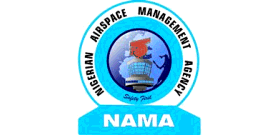 Nigeria's Airspace Upgrade: A Boon for African Travel
Nigeria's Airspace Upgrade: A Boon for African Travel
Nigeria is poised to significantly enhance its airspace communication infrastructure, a move that promises smoother and safer skies for African travel. The Nigerian Airspace Management Agency (NAMA) is set to deploy a cutting-edge High-Frequency (HF) transceiver system developed by Rohde & Schwarz, a global leader in communications technology.
This technological leap represents a significant upgrade from the current Very High Frequency (VHF) systems, which have limitations in range. The new HF system boasts advanced signal processing algorithms that minimize noise interference, ensuring clearer and more reliable air-to-ground communication.
The enhanced communication capabilities will extend across Nigerian airspace, covering the Gulf of Guinea, reaching far into the Atlantic Ocean, and spanning the northern desert regions beyond the Kano Flight Information Region (FIR). This expanded coverage is a game-changer for flight safety and efficiency, particularly for long-haul flights traversing these vast areas.
A delegation led by NAMA Managing Director, Engr. Farouk Umar, recently visited the Rohde & Schwarz factory in Germany for a factory assessment test (FAT) of the equipment. This visit underscores NAMA's commitment to ensuring the highest quality and reliability of the new system.
Engr. Umar expressed confidence in the transformative impact of this upgrade, stating that it will significantly bolster upper airspace communication within Nigeria. This improvement aligns with the Nigerian President's commitment to enhancing aviation safety through modernized airspace infrastructure.
The collaboration between NAMA, Rohde & Schwarz, and Deo Makro Ltd., the local contractor, highlights the importance of public-private partnerships in driving technological advancements within the African aviation sector. This project serves as a model for other African nations looking to improve their airspace management capabilities.
For African travel agents, this upgrade translates to increased flight reliability and safety for their clients traveling to and from Nigeria. The improved communication infrastructure will also contribute to more efficient flight operations, reducing delays and enhancing the overall travel experience.
This development is a positive sign for the future of African aviation. By investing in cutting-edge technology, Nigeria is setting a precedent for other nations to follow, paving the way for a safer, more connected, and efficient African sky.
The improved communication infrastructure will also facilitate better coordination between air traffic control and pilots, further enhancing safety and efficiency. This is particularly crucial in managing the increasing volume of air traffic across the African continent.
Furthermore, the enhanced communication range will enable more accurate weather reporting and forecasting, allowing airlines to make more informed decisions regarding flight routes and schedules. This is especially important in regions prone to unpredictable weather patterns.
The upgrade of Nigeria's airspace communication infrastructure is a significant step towards achieving a seamless and integrated African airspace. This will not only benefit Nigerian travelers but also contribute to the growth and development of the African aviation industry as a whole.
